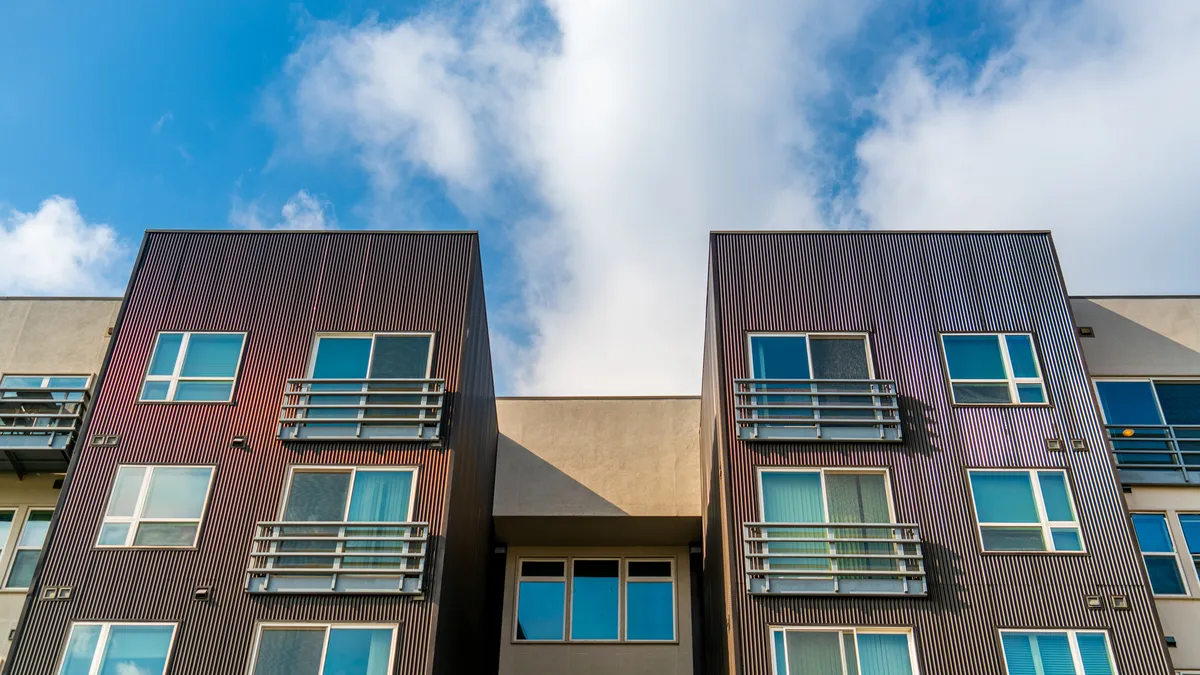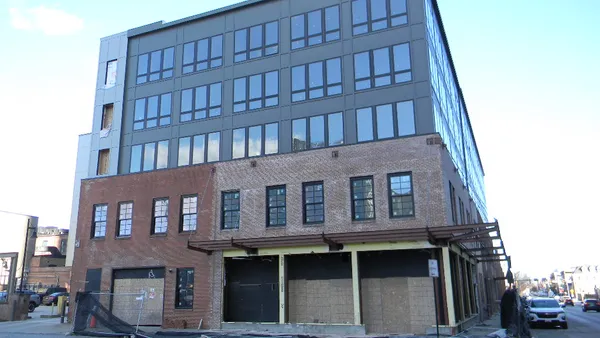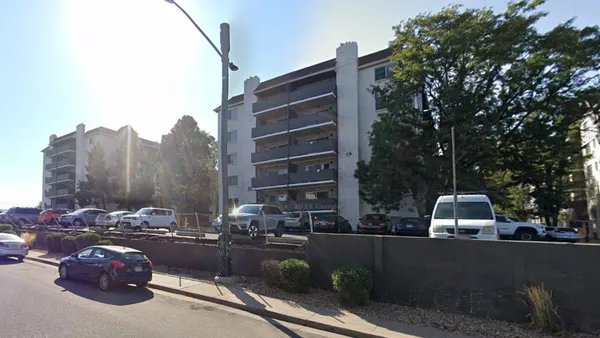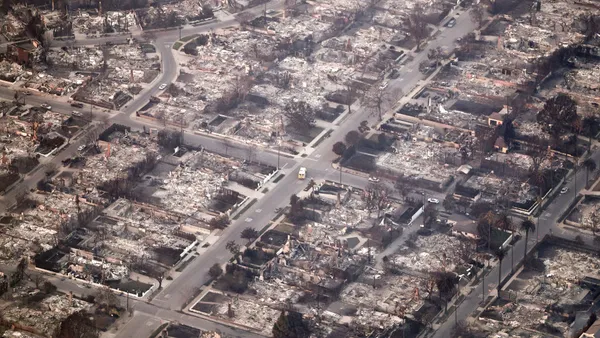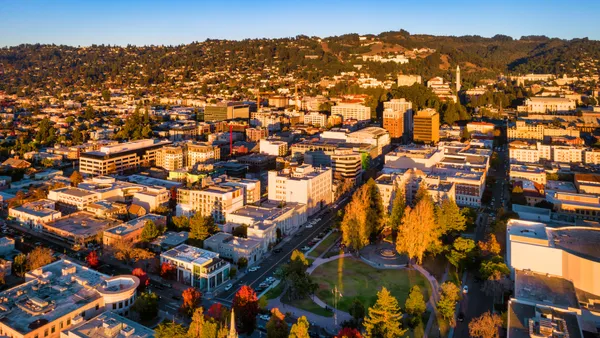Dive Brief:
- The national vacancy rate for rental housing was 5.8% in the fourth quarter of 2022, according to new data from the U.S. Census Bureau. This is down from 6.0% in the third quarter of 2022 and up from 5.6% in the fourth quarter of 2021, though the Census notes that neither change is statistically significant.
- Out of the 50 states, Massachusetts had the lowest rental vacancy rate at 2.8%, according to a study of Census data that Texas Real Estate Source shared with Multifamily Dive. Maine, Utah, Kentucky and Montana followed close behind, with vacancy rates ranging from 2.9% to 3.3%. Arkansas had the highest rental vacancy rate at 13.3%, followed by North Dakota at 11.8%.
- At the metro-area level, out of the 75 largest MSAs in the country, Bridgeport-Stamford-Norwalk, Connecticut, had the lowest vacancy rate at 1.8%, according to the Census.
Dive Insight:
Among the contributors to apartment vacancy rates is the balance of supply and demand in a particular area. If a market is over- or under-supplied, the population suddenly shifts or rents rise or fall significantly, these changes will be reflected in the vacancy rate.
Apartment developers were expected to have completed 420,000 new units nationwide last year. Dallas-Fort Worth, the area with the highest deliveries for 2022 at 23,500, holds a vacancy rate of 6.7%.
Cities with the lowest rental vacancy rates
| MSA | Vacancy rate in Q4 2022 |
|---|---|
| Bridgeport-Stamford-Norwalk, Connecticut | 1.6% |
| North Port-Bradenton-Sarasota, Florida | 2.3% |
| Omaha-Council Bluffs, Nebraska-Iowa | 2.3% |
| Fresno, California | 2.4% |
| Sacramento-Roseville-Arden-Arcade, California | 2.5% |
SOURCE: U.S. Census Bureau
Three of the 75 most populous MSAs are located in or near Massachusetts – Boston-Cambridge-Newton, Massachusetts-New Hampshire, Providence-Warwick, Massachusetts-Rhode Island, and Worcester. All three have vacancy rates at the low end of the distribution, between 1.8% and 3.8%. (Worcester’s data is for the third quarter of 2022; fourth-quarter data was not available.)
The MSA with the highest vacancy rate is Little Rock, Arkansas, at 16.3%. The Little Rock market’s vacancies have fluctuated significantly over the past several years, from 11.0% in the fourth quarter of 2021 to 6.0% in the first quarter of 2022 and 13.3% in the third quarter of 2022. The current vacancy rate is the highest on record since 2015.
Little Rock has undergone an upswell of rent growth activity over the past three years. Bucking the national trend, the market’s annual rent growth rose rather than fell in the immediate aftermath of the COVID-19 lockdown period. Rent growth peaked at over 8% in mid-2022 and currently stands between 5% and 6%, according to a report by Bill Kitchens, director of market analytics at CoStar. RentCafe lists the market’s current average rent as $940.
Cities with the highest rental vacancy rates
| MSA | Vacancy Rate in Q4 2022 |
|---|---|
| Little Rock-North Little Rock-Conway, Arkansas | 16.3% |
| Birmingham-Hoover, Alabama | 13.2% |
| Albany-Schenectady-Troy, New York | 13.1% |
| Oklahoma City | 12.5% |
| Toledo, Ohio | 12.0% |
SOURCE: U.S. Census Bureau
Population growth in the city has underperformed the U.S. average, as well as many of its peers in the Southeast region, at 6.6% from 2010 to 2021. The same holds true for employment, as the city saw fewer job cuts than other markets in the area but also did not experience any explosive job growth, Kitchens told Multifamily Dive.
“I would characterize Little Rock’s economy as steady and stable,” Kitchens said.
The market has less than 50,000 rental units total, and of that number, 75% are characterized as Class B or below, according to CoStar data. New deliveries in the market peaked at around 2,500 units in 2021, then fell off in 2022, at the same time as net absorption underperformed at a historic level.
“Over the past year, a big theme has been demand pulling back in a lot of markets,” Kitchens said. “A lot of Southeast markets are seeing a lot of supply-side pressure, and that’s a recipe for rising vacancy rates. We’ve seen some [vacancy rate] expansion in Little Rock, but still below that 2017-2019 pre-crisis average, and still relatively stable.”



